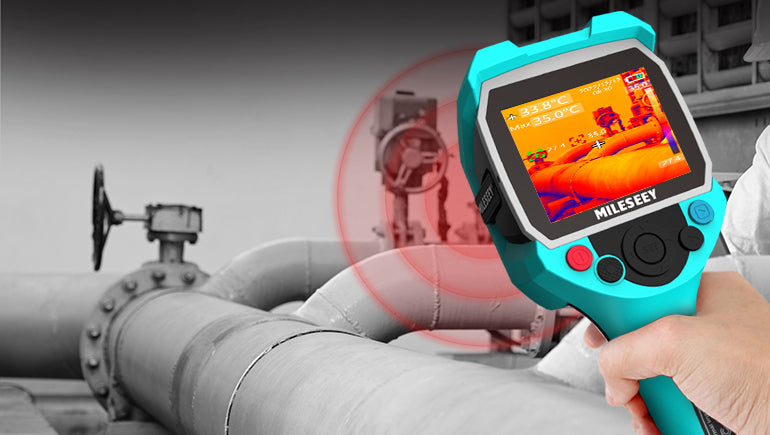Top Water Leak Detection Methods to Secure Your Property from Water Damage
Top Water Leak Detection Methods to Secure Your Property from Water Damage
Blog Article
Innovative Solutions for Very Early Detection of Water Leaks in Structures and Facilities
From advanced leakage discovery innovations to the implementation of IoT sensing units for real-time monitoring, the landscape of leak prevention is evolving quickly. Automated water circulation analysis systems are reshaping exactly how leaks are recognized and attended to, paving the way for a proactive technique to water leak detection.
Advanced Leakage Discovery Technologies
Advanced leakage discovery modern technologies, outfitted with cutting-edge sensing units and formulas, play an essential role in swiftly identifying and determining water leaks in various setups. These modern technologies employ a mix of acoustic, thermal, and electro-magnetic sensing techniques to find leakages accurately. Acoustic sensing units identify the sound of escaping water, allowing for specific localization of the leakage source. Thermal imaging detects temperature level modifications triggered by water leak, offering another efficient method for leakage identification. Electro-magnetic sensing units can determine modifications in magnetic fields created by water, supplying yet another layer of leak discovery ability.

IoT Sensors for Real-Time Tracking
In the realm of contemporary water leakage discovery, the integration of IoT sensors for real-time tracking stands for a pivotal improvement in boosting proactive leak detection abilities. These sensing units supply continual surveillance of water systems, supplying real-time information on water circulation prices, stress variants, and temperature changes. By leveraging IoT innovation, these sensing units can find even the smallest anomalies in water use patterns, making it possible for very early recognition of prospective leakages before they rise right into major problems.
IoT sensing units transfer information to a central platform, where sophisticated algorithms evaluate the information and generate alerts or notifications when abnormalities are spotted. This real-time monitoring capability allows homeowner or center supervisors to immediately attend to leaks, reducing water damage, lowering repair work expenses, and saving water resources.
Furthermore, IoT sensing units can be incorporated with building management systems, permitting computerized feedbacks to found leaks, such as shutting down water shutoffs or triggering pumps to reduce the impact of leakages. In general, the i was reading this implementation of IoT sensing units for real-time tracking dramatically boosts the effectiveness and performance of water leak detection in structures and infrastructure.
Artificial Intelligence Algorithms for Leak Forecast

One secret advantage of making use of artificial intelligence for leak forecast is its capability to continually learn and boost its precision over time. As more information is gathered and fed into the algorithm, it can improve its predictions and adjust to altering problems, ultimately increasing the reliability of leak discovery systems.
Additionally, artificial intelligence algorithms can check over here assist in recognizing refined indications of leakages that might go undetected by conventional monitoring techniques. water leak detection. By evaluating intricate data embed in real-time, these algorithms can give early cautions and alerts, permitting timely treatment and precautionary upkeep to reduce possible water damage and connected prices
Utilizing Thermal Imaging for Leakage Detection
Thermal imaging innovation uses an encouraging strategy for spotting water leaks in different systems and infrastructures. By utilizing infrared radiation and temperature variations, thermal imaging cams can recognize surprise leakages that are not conveniently noticeable to the nude eye.
One of the essential advantages of thermal imaging for leak detection is its non-intrusive nature. Unlike traditional methods that may require getting into walls or floors to locate leakages, thermal imaging permits for non-destructive screening. This not just saves time and decreases costs but also reduces disruption to the building or framework being analyzed. In addition, thermal imaging can promptly check big locations, supplying a detailed introduction of prospective leak resources in a prompt manner. Overall, making use click over here now of thermal imaging innovation improves the efficiency and precision of water leakage detection, making it a valuable device for preserving the stability of buildings and infrastructures.
Automated Water Circulation Analysis Equipments
Exactly how can computerized water flow evaluation systems change the discovery and management of leakages in various systems and frameworks? Automated water circulation analysis systems provide a positive approach to leakage detection by constantly keeping track of water circulation rates and patterns. By developing baseline information, these systems can quickly determine discrepancies that might indicate a leakage, enabling punctual intervention to stop considerable damage.
These systems make use of advanced algorithms to examine real-time data and offer prompt alerts when anomalies are detected, enabling speedy action to be taken. Furthermore, computerized water flow analysis systems can be integrated with structure monitoring systems or IoT platforms, enhancing overall effectiveness and making it possible for remote monitoring abilities.
In addition, the information accumulated by these systems can be made use of for anticipating upkeep objectives, aiding to recognize possible weak factors in the framework prior to leaks happen. In general, the application of automated water circulation analysis systems can considerably enhance leak discovery and monitoring techniques, eventually causing cost savings, decreased water wastage, and increased sustainability in structures and facilities.

Conclusion
Finally, the combination of innovative leak detection technologies, IoT sensors, maker understanding formulas, thermal imaging, and computerized water circulation evaluation systems offers cutting-edge solutions for early discovery of water leakages in structures and framework. These modern technologies enable real-time monitoring, forecast of leaks, and efficient detection methods to stop water damage and waste. Executing these services can help in preserving the stability and sustainability of water systems in various settings.
Report this page